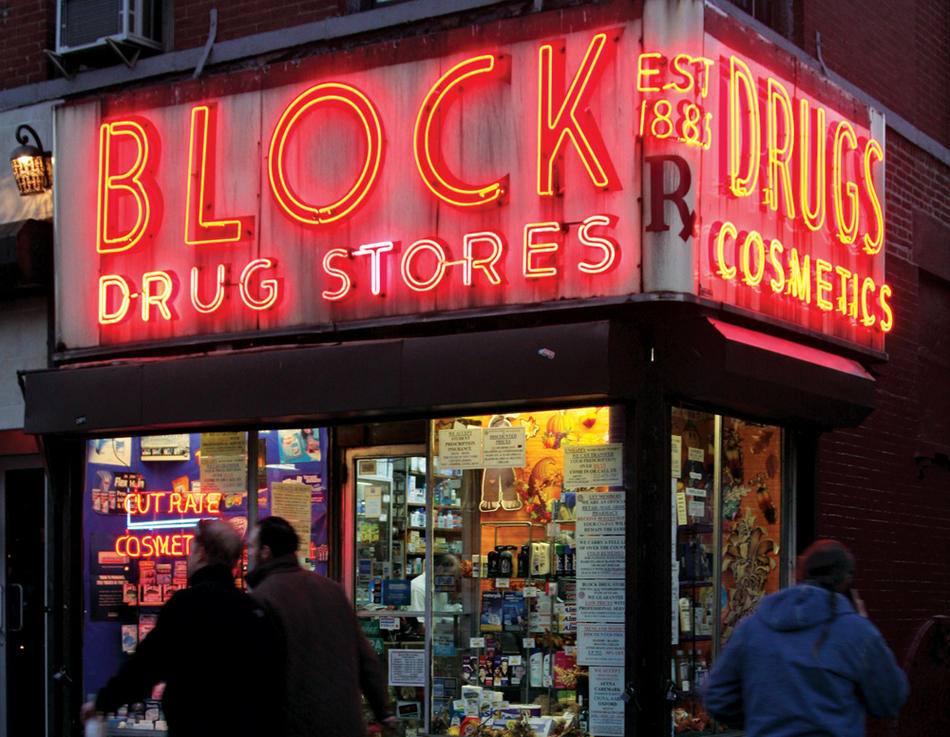How did neon go from a glowing symbol of the future to an emblem of urban decay?
At its pinnacle in the 1930s, eight miles of neon dazzled visitors to the 1933 World’s Fair in Chicago, while in New York the layout men, tin knockers, and tube benders of any given sign shop produced around sixty-five linear feet a day.
Civic reformers had long condemned all electrified signs as cheap salesmanship run amok. Madison Square was for a time host to both the stately Dewey Arch and, facing it, a giant illuminated Heinz sign crowned by a forty-five-foot pickle: “The dancing flash-lights of the ‘57 varieties,’” wrote one critic, “are unimaginable except in nightmare.”
But the fall of neon’s reputation didn’t come until the post–World War II era, when families fled to bedroom suburbs, and neon came to be identified with gin joints and flophouses — the decadence of the city itself. “The joint looked like trouble,” intones Dick Powell in Murder, My Sweet, as the camera finds a bar’s flickering letters.
Today, urban life is back in fashion, and preservationists are discovering neon just as it disappears. In New York Neon, Thomas E. Rinaldi ’10GSAPP documents his favorite specimens, through photographs taken in the short window between dusk and the illumination of the street lamps. On many blocks, the old neon outshines its setting. As the architect Robert A. M. Stern ’60CC once joked about the blue neon letters atop the Pan Am building, “Couldn’t they just leave the sign up and take the building down?”



